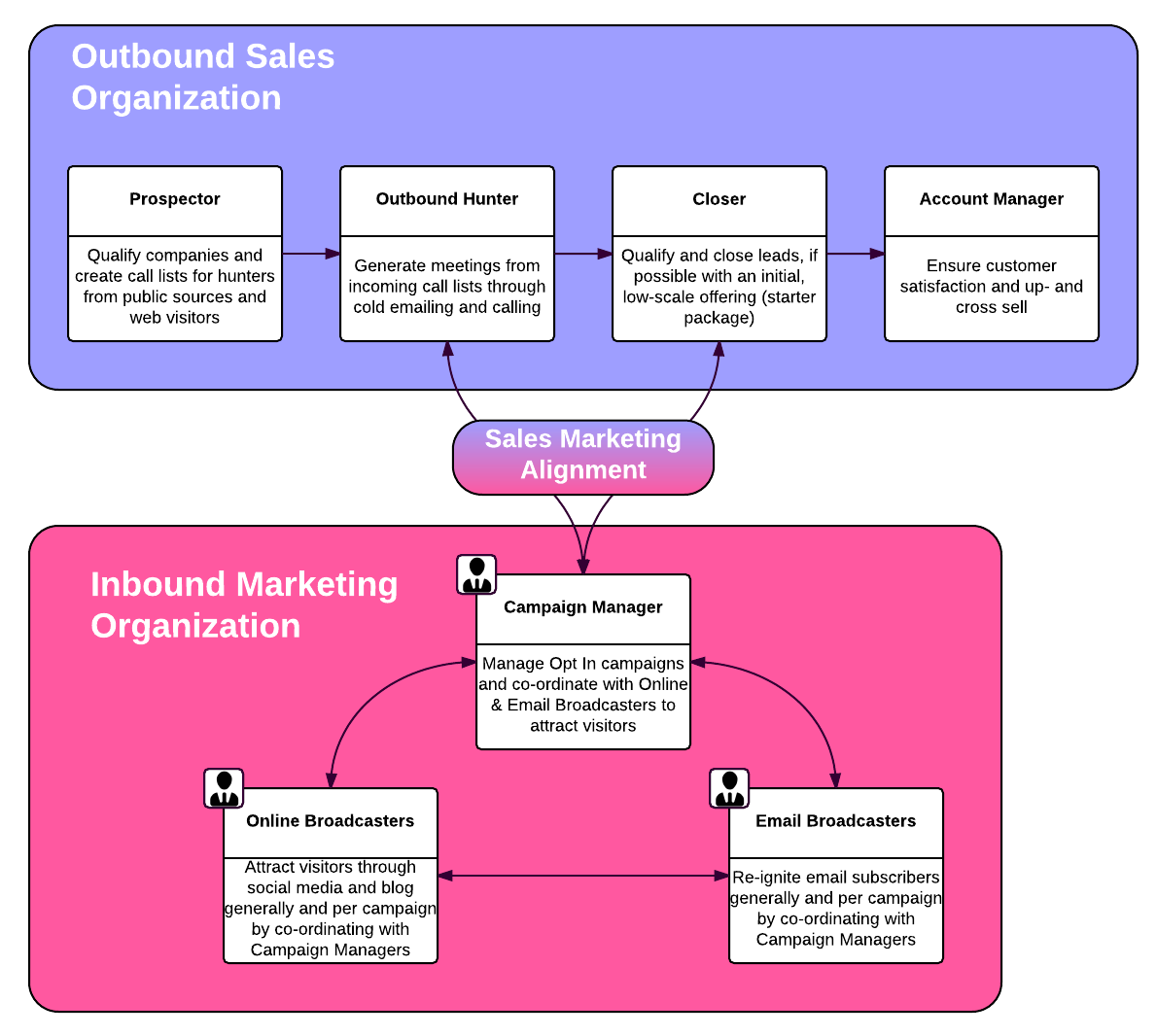How An Integrated Sales and Marketing Organization Works

A well integrated sales- and marketing organization reminds somewhat of a soccer team. If you create a clear organization with well defined roles you will increase clarity, efficiency and control. Read more below to see exactly how to do this.
In a soccer team, everybody has a clear role, and they know exactly what to do in various situations. A well integrated sales and marketing organization is the same:
- Your defenders are the Prospectors who list people to call and your Online Broadcasters who who attract people to your site.
- Your midfielders are your Hunters who book meetings and your Campaign Managers who convert visitors to leads.
- Your attackers are your sales people who take the meetings and leads and try to score by closing the deal.
By specifying precise roles and how they interact with each other, you can get your team to score more efficiently.
The sales and marketing equivalent of a soccer team
Here’s a fully integrated sales and marketing organization and each role specified:
Most organizations have generic roles such as “sales executive” or “marketing executive”. Some go further with roles such as “Social Media Manager” or “Inbound Marketer”. But the interaction between them usually isn’t defined. Each role and their KPIs are measured in isolation (such as Facebook likes) rather than as parts of an interlinked chain of KPIs ultimately leading to sales.
By defining more specific roles and the way they interact as a team, you will increase revenue, control and predictability.
But how do you do it?
The easiest way to create ownership in your sales and marketing organization
Think of each role as a “hat” that can be worn by different people.
If you haven’t defined very specific roles and associated KPIs, chances are multiple people are sharing and switching various hats. This means, nobody feels responsibility for and ownership of the KPIs tied to each hat. In this kind of organization, people become stressed and spend a good portion of their time thinking about what to do instead of just doing it. Results suffer.
The first step is to figure out which people share which hats. Select a hat with no clear owner, and try to see which people naturally drift towards it. Select that person as its owner.
This doesn’t mean that this person should suddenly stop working on everything else. Rather, it means that nobody else owns the hat that has been assigned to this person. Over time, this person will allocate more and more of his or her time on this hat, leaving other hats to other people. This is how a “spaghetti organization” is slowly resolved.
Repeat this process for shared hat you detect. Over time, you will end up with an organization where everybody has clear responsibilities and ownership.
Time to create a true team by integrating sales and marketing
The new clarity in ownership and responsibility will make communication and decision making easier and make wonders for co-operation.
With this foundation in place, you can begin to define the interactions between each role in a more structured way. This is described in the next blog post, which explains the integration of sales and marketing processes.
Or check out the full list of articles in the series here: Complete Guide to Sales and Marketing Alignment.


